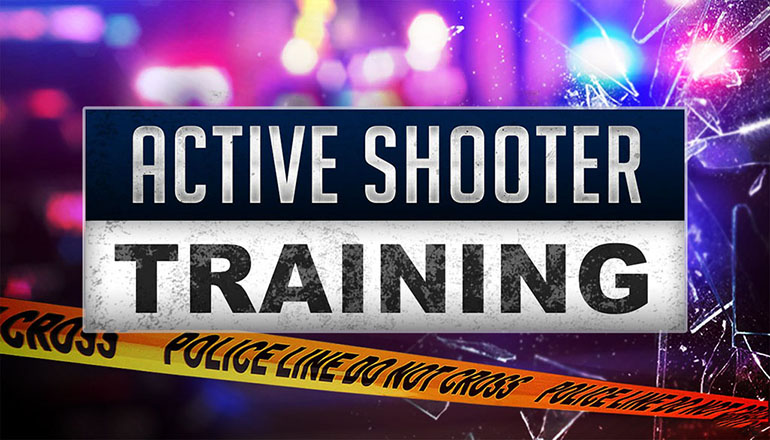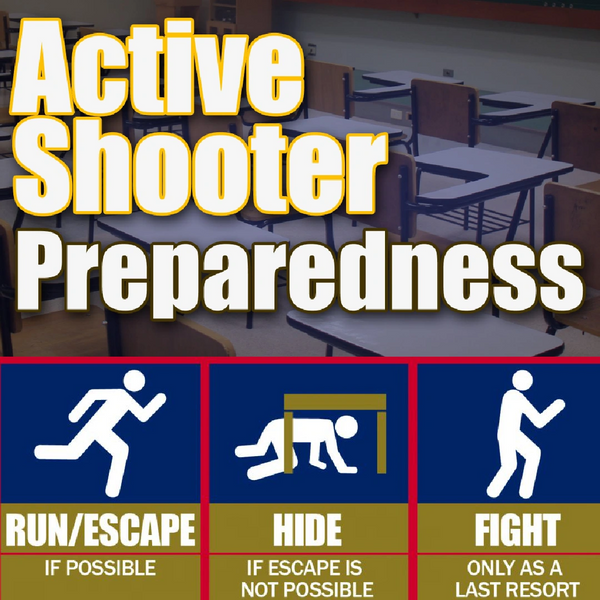Best Practices for Implementing Active Shooter Training in Your Firm
Best Practices for Implementing Active Shooter Training in Your Firm
Blog Article
Executing Energetic Shooter Training: Ideal Practices for Producing a Safe and Prepared Community Atmosphere
As neighborhoods face the unsettling truth of active shooter incidents, the execution of extensive training programs ends up being crucial. An effective approach rests on not only the advancement of customized curricula that deal with local threats yet also the participation of diverse stakeholders. By utilizing a selection of training methods, neighborhoods can guarantee that all participants are geared up with important abilities. However, the obstacle depends on maintaining an adaptive framework that progresses with emerging threats. What are the crucial aspects that can transform a standard training program into a robust design for community durability?

Recognizing the Demand for Educating
In a period noted by enhancing incidents of violence in public rooms, understanding the demand for energetic shooter training has never ever been a lot more critical. Detailed training efforts can gear up participants with the understanding and abilities to respond decisively.
Furthermore, the mental effect of violence on people and communities can not be overemphasized. Training promotes a sense of empowerment and preparedness, making it possible for individuals to feel even more safe in their surroundings. It additionally advertises a society of safety, where understanding and alertness end up being indispensable components of every day life. The advantages of energetic shooter training expand beyond immediate response; they consist of enhancing interaction protocols and enhancing general precaution within organizations.
Key Parts of Effective Programs
Efficient energetic shooter training programs include several vital components that enhance readiness and reaction capacities. Initially, detailed educational program growth is essential, making certain that training web content is appropriate, evidence-based, and customized to the specific needs of the company or neighborhood. This includes recognizing the dynamics of energetic shooter occurrences and the mental impact on people involved.
Second, practical training scenarios need to be utilized to mimic possible scenarios, enabling participants to practice decision-making and reaction approaches in a regulated atmosphere. These drills help with muscle mass memory and build self-confidence among participants.
Third, a concentrate on communication procedures is crucial. Establishing clear lines of communication amongst police, emergency situation -responders, and individuals makes sure coordinated responses during an incident. Regular updates and correspondence course aid maintain interaction paths clear and efficient.
Fourth, recurring evaluation and feedback systems must be integrated right into the training program - active shooter training. Analyzing the efficiency of training via individual responses and efficiency metrics permits continual renovation
Last but not least, fostering a culture of safety and readiness within the community motivates caution and aggressive procedures, making sure that individuals are not just skilled yet also participated in keeping a secure setting.
Engaging Neighborhood Stakeholders

To effectively engage these stakeholders, it is vital to communicate the purposes and advantages of the training. Hosting educational sessions can assist clear up the training's objective, address problems, and describe the duties each stakeholder may play. Additionally, producing a stakeholder advising committee can promote continuous dialogue, enabling for varied viewpoints and insights to be integrated into the training program.
Structure connections with area leaders and organizations is additionally critical. Their support can boost outreach initiatives, boost participation, and make sure that training is tailored to the one-of-a-kind needs of the neighborhood. Additionally, stakeholders can assist in sharing info and sources, strengthening the message of security and preparedness.
Eventually, engaging neighborhood stakeholders not only strengthens description the training campaign but additionally grows a sense of possession among residents, bring about a more resilient and enlightened area with the ability of responding properly to potential dangers.
Training Distribution Methods
Utilizing a selection of training distribution techniques is vital to accommodate the diverse knowing designs and needs of individuals in active shooter training programs (active shooter training). Reliable training can take a number of types, consisting of lectures, hands-on simulations, online modules, and interactive workshops. Each technique serves an unique function and can improve the general knowing experience

Online components use flexibility and availability, allowing participants to find out at their own speed. These can include videos, quizzes, and conversations to evaluate understanding. Interactive workshops urge group conversations and analytical, advertising team effort and communication skills.
Incorporating a combined method that integrates click for more these methods not only enriches the training experience yet likewise ensures that participants are better prepared to respond successfully in the occasion of an active shooter circumstance (active shooter training). By addressing various finding out choices, companies can develop an extra educated and receptive neighborhood
Constant Evaluation and Enhancement
Routine assessment and improvement of active shooter training programs are essential to maintaining their relevance and performance. As dangers advance, so must the methods and techniques employed in training. Continual analysis makes sure that training web content shows the current intelligence on energetic shooter incidents, including lessons picked up from recent occasions and readjusting for emerging fads.
To promote this process, companies need to establish feedback devices that include individual evaluations, expert testimonials, and incident debriefs. Collecting data on individual performance during drills and exercises is essential, as it highlights locations needing enhancement and notifies future training sessions. Furthermore, involving with law enforcement and emergency responders can offer beneficial insights into the usefulness and applicability of training methods.
On a regular basis set up testimonials of training products and techniques must be use this link mandated, fostering an environment of innovation and versatility. Organizations should additionally urge a society of ongoing knowing, where personnel participants feel empowered to suggest changes based on their experiences. By devoting to continual assessment and enhancement, companies not just boost the performance of their energetic shooter training programs yet additionally strengthen their total dedication to safety and security and preparedness within the neighborhood.
Final Thought
Finally, effective execution of energetic shooter training demands a thorough approach that focuses on area engagement and realistic simulations. By establishing customized educational programs, integrating diverse training approaches, and fostering partnership among stakeholders, areas can boost readiness. Constant assessment and responses devices are vital for adapting programs to emerging threats, thus strengthening overall security. Eventually, a dedication to recurring training and renovation grows a culture of vigilance and readiness, ensuring a safer setting for all community participants.
Report this page